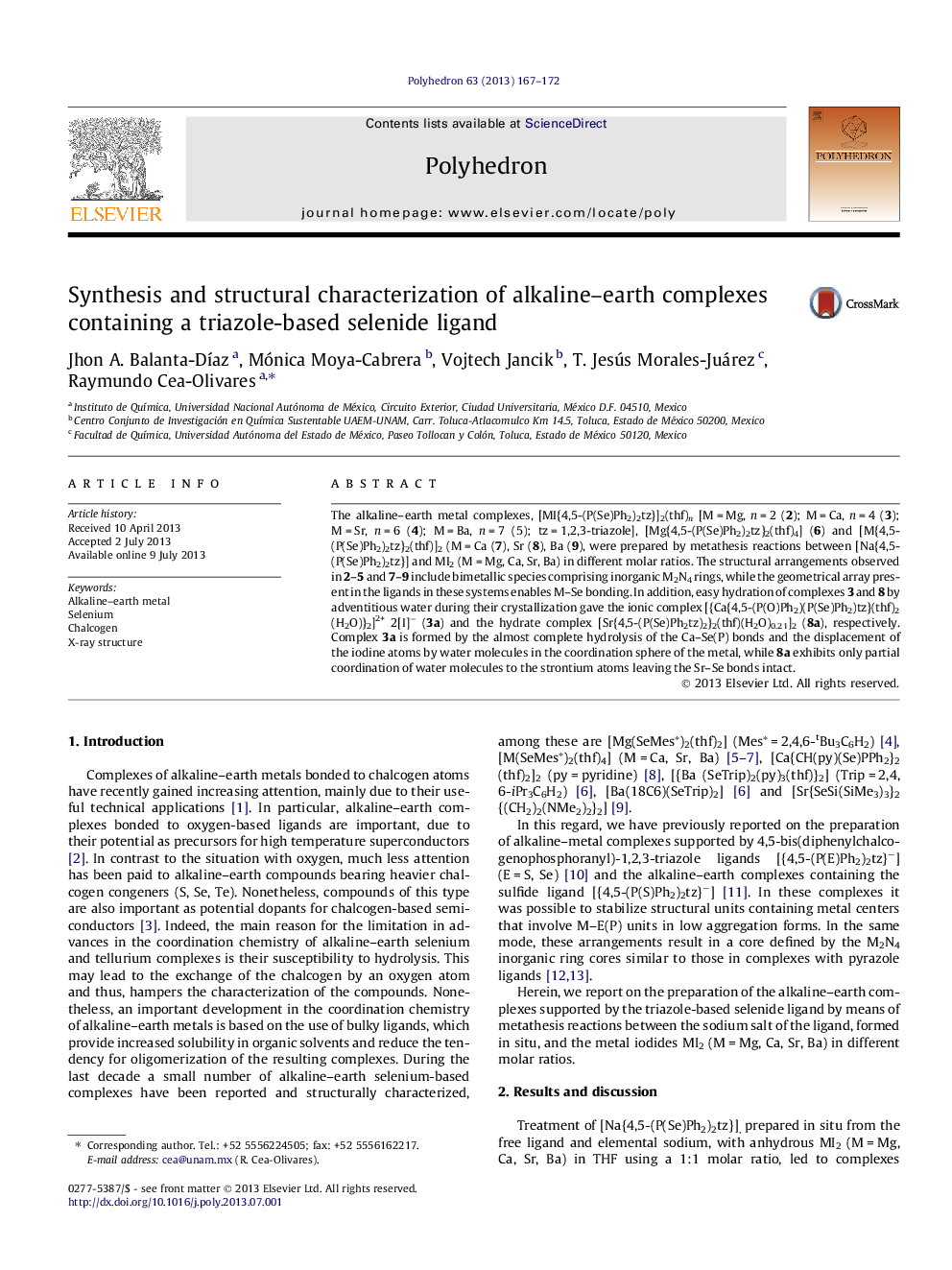| Article ID | Journal | Published Year | Pages | File Type |
|---|---|---|---|---|
| 1335571 | Polyhedron | 2013 | 6 Pages |
The alkaline–earth metal complexes, [MI{4,5-(P(Se)Ph2)2tz}]2(thf)n [M = Mg, n = 2 (2); M = Ca, n = 4 (3); M = Sr, n = 6 (4); M = Ba, n = 7 (5); tz = 1,2,3-triazole], [Mg{4,5-(P(Se)Ph2)2tz}2(thf)4] (6) and [M{4,5-(P(Se)Ph2)2tz}2(thf)]2 (M = Ca (7), Sr (8), Ba (9), were prepared by metathesis reactions between [Na{4,5-(P(Se)Ph2)2tz}] and MI2 (M = Mg, Ca, Sr, Ba) in different molar ratios. The structural arrangements observed in 2–5 and 7–9 include bimetallic species comprising inorganic M2N4 rings, while the geometrical array present in the ligands in these systems enables M–Se bonding. In addition, easy hydration of complexes 3 and 8 by adventitious water during their crystallization gave the ionic complex [{Ca{4,5-(P(O)Ph2)(P(Se)Ph2)tz}(thf)2(H2O)}2]2+ 2[I]− (3a) and the hydrate complex [Sr{4,5-(P(Se)Ph2tz)2}2(thf)(H2O)0.21]2 (8a), respectively. Complex 3a is formed by the almost complete hydrolysis of the Ca–Se(P) bonds and the displacement of the iodine atoms by water molecules in the coordination sphere of the metal, while 8a exhibits only partial coordination of water molecules to the strontium atoms leaving the Sr–Se bonds intact.
Graphical abstractAlkaline-earth metal complexes were prepared by metathesis reactions between [Na{4,5-(P(Se)Ph2)2tz}] and MI2 (M = Mg, Ca, Sr, Ba) in different molar ratios. The structural arrangements include bimetallic species comprising inorganic M2N4 rings, which enable M–Se bonding.Figure optionsDownload full-size imageDownload as PowerPoint slide
